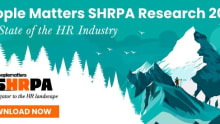Jobless rate rises after lockdowns in Australia: Is recovery in sight?

Australia's jobless rate rose for a second month in September after a surge in COVID-19 Delta variant cases prompted businesses to close shop temporarily and cut jobs in order to stay afloat.
Unemployment hit 4.6% as the country lost 138,000 jobs in September. The figure is up from 4.5% when it slashed 146,100 jobs in August, data from the Australian Bureau of Statistics (ABS) showed.
Meanwhile, the participation rate also dropped to 64.5%, with a total of 330,000 workers stepping out of the labour force.
Employment numbers at a glance
-
Employment dropped to 12,884,600.
-
Full-time jobs increased by 26,700 while part-time jobs fell by 164,700.
-
Employment to population ratio decreased to 61.5%.
-
Underemployment rate fell to 9.2%.
"The low national unemployment rate continues to reflect reduced participation during the recent lockdowns, rather than strong labour market conditions," said Bjorn Jarvis, head of labour statistics at the ABS.
Some analysts expect employment numbers to get worse before they get better. The Reserve Bank of Australia, for its part, is predicting unemployment to reach 5% by the close of 2021.
Sarah Hunter, chief economist for BIS Oxford Economics, meanwhile held similar views. "Notwithstanding the capacity for a robust recovery in the economy, it is likely to be well into 2022 before the labour market fully recovers," Hunter said, as cited by Bloomberg. "Looking ahead, the labor data will continue to reflect the impact of lockdowns in the near term."
Despite the overall size of the workforce shrinking, the total number of hours worked in all jobs grew by 15 million hours last month. "The rise in hours worked followed three months of falls reflecting the impact of ongoing lockdowns and other restrictions over this period," the ABS noted.
Hours worked "provide a more comprehensive indication of the extent of labour market impacts over the pandemic than employment, given some employed people temporarily have reduced hours or no work, without necessarily losing their jobs," the bureau said.
















